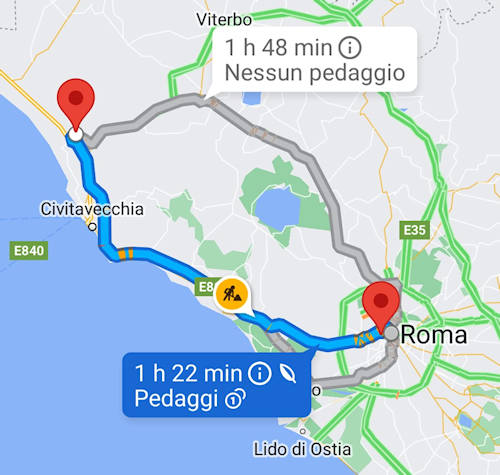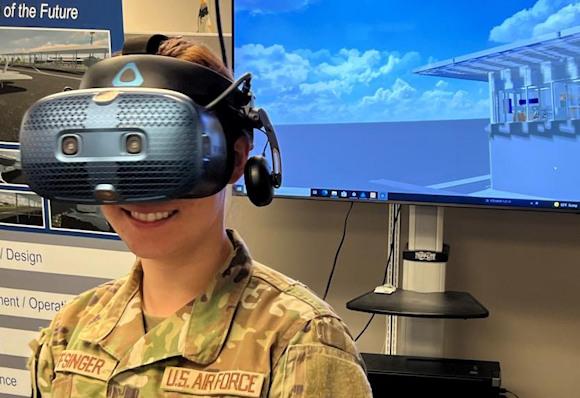We are dealing more and more often, perhaps even without having the right awareness, with models of the world instead of the real world. And, always without realizing it, we use simulations based on these models to solve our small (or large) daily problems.
Modeling and simulation are a valuable resource at our service. We will try to understand the general characteristics and the more particular aspects affecting the world of defence, current uses and possible evolutions over time.
Models and Simulations
A "model" is simply a representation simplified by an aspect of the real world reported in a modeling domain different from the real one. It is therefore a model of a street map of our neighborhood on paper, as well as the map of the same neighborhood which we access via Google Maps.
In the case of the map/map, the aspect of the real world that we want to represent is the physical reality in which we live (our neighborhood) while the modeling domain in which we represent it is that of a physical paper support (in the case of the road map) or a computer environment (in the case of the application Google Maps).
It should immediately be highlighted that there are different types of representation of the real world. Representations that differ because the aspects that we need to model can be many, depending on the use we want to make of the model.

Let's take a practical example using the example of the map again. If I want to understand which road to take with my car to get from one country to another, a road map is enough for me. But if, on the other hand, I want to go on a hike to reach the top of a hill, a hiking map is more suitable, i.e. a model which, instead of petrol stations and tourist attractions, shows contour lines, paths and springs, i.e. a representation graphics of real elements useful for me to evaluate the best route through the woods. How do the two maps (therefore: the two models) differ? In the real world features modeled.
If I walk through the woods, I'm interested in contour lines, paths, springs; if I do tourism with my car and go to visit villages, I'm interested in knowing where the petrol stations or museums are located. Juice of the discourse: of the same real domain there can be several models that differ from each other in the aspects that are actually represented.
A "simulation" is instead the transposition of an activity into an environment in which, instead of the real world, a simulation model is used which represents one or more aspects of the real world itself.
Practical example, starting from our example of the map: tomorrow I plan to go from Rome to Tarquinia; I open google maps and I choose to get the road directions, selecting the starting and finishing points, choosing the car as a means of transport, asking them to suggest me an itinerary with a starting time of 9 am the following day.

What have I done? Instead of actually trying a route, I asked the Google app to simulate it. And, in this case, I discovered that I have three possible choices (from Civitavecchia, from Orte or from Sutri), of different duration and length, different length of the journey, different places that can be visited during the itinerary, different traffic forecasts that I could encounter . I then used a land model and a simulation based on that model. And I used them to get information that, if I had used the real world, would have been much more complicated and expensive to obtain. Information obtained quickly and easily that allows me to make a choice (the route to follow) that best suits my needs.
From the example just given, it is clear why we are talking about simulation models. Our example on the map (in paper and digital format) is really trivial. Today simulation models have been developed in many fields, also because they are helped by the power and availability of digital simulation tools: models of electrical circuits, models of buildings, mechanical structures; atmospheric models for weather forecasting; ecosystem models; models of celestial bodies; models for flight simulators… and so on and so forth.
I benefits so simulating an activity (using a model) rather than actually doing it are different:
• Being able to test different hypotheses and compare them (example of the different routes on Google Map)
• Being able to evaluate the evolution of situations by compressing the times (think of the weather forecast)
• Evaluate modifications of the modeled system (how does the seismic resistance of a built building improve if we modify one of the load-bearing structures?) and/or understand which are the most critical elements for the purpose of achieving a certain objective (which mechanical elements can I reinforce to obtain greater torsional strength of a mechanical subsystem?)
• Evaluate possible unexpected situations (think of pilot training on flight simulators to train them to handle malfunctions)

• Improve the design phase of a system:
- Accurately define the requirements of the system to be designed
- understand which design alternatives are the most effective
- have a consistent and meaningful test data stream
- give evidence to the customer of the performance of the designed system
There are obviously gods risks that there is a rush to misuse model-based simulations, the main ones being:
• inaccurate modeling (I have not modeled some of the real quantities with sufficient accuracy)
• inappropriate modeling (I modeled only some of those quantities that I actually would have needed to achieve my goal)
• Wrong assumptions (I modeled the real system considering some prerequisites that are not respected in the simulation)
• Error in stimuli (I am feeding the model with unrealistic data)
Once the conceptual context of the simulation and modelling (there are many treatments on the web, for example1 let's now find out how this discipline and how its best practices have played and are representing a very important role in the world of defense, starting with some historical notes.
History of simulations
Today we inextricably link the concept of simulation to the use of computers but, if we think about it, models and simulations can exist independently of the tool used to simulate.
The simplest reasoning of a human being is almost always based on a mental representation of the consequences of his actions on the surrounding world: if I do this action, this event will happen because the world around me (other people, the car I'm driving, etc.) will behave like this; so I should do… And what else is this that we have described if not a simulation based on mental models of the external world and their behaviors?
 And certainly the first simulations for the first homo sapiens they were based onexecution imagined (through one's brain) of models (mental) experiences of the surrounding environment. Simulations used, for example, for hunting trips. Or even for the former fighting between rival clans. And it is a fairly accredited hypothesis that the first rock paintings, depicting game to be hunted, may have been used by primitive men themselves to practice, as well as propitiatory purposes, in hunting trips, given that signs have been found on some of them of spear blows2. We can therefore interpret these paintings as a "model" of the hunting scenario and possible prey.
And certainly the first simulations for the first homo sapiens they were based onexecution imagined (through one's brain) of models (mental) experiences of the surrounding environment. Simulations used, for example, for hunting trips. Or even for the former fighting between rival clans. And it is a fairly accredited hypothesis that the first rock paintings, depicting game to be hunted, may have been used by primitive men themselves to practice, as well as propitiatory purposes, in hunting trips, given that signs have been found on some of them of spear blows2. We can therefore interpret these paintings as a "model" of the hunting scenario and possible prey.
Without wanting to systematically and exhaustively report all the stages of how the simulation of battles has evolved, it can be fun to mention the game of chess, even if only at a folkloric level. Game that probably originated as a simulation of a battle (it derives from the Indian game Chaturanga, symbolizing the four parts of an army of the time: chariots, elephants, horsemen and foot soldiers). And it is useful to reflect on the fact that, for a long time, the contenders in a battle used to depict and simulate the enemy's moves through "sand tables", i.e. representations of the forces deployed on a topographic map3.
Simulating the forces of the enemy, the possible evolutions of a battle, or even just practicing using a topographic map, obviously has many limitations related to the possibility of diversifying the scenarios, of modeling the behavior of the forces in the field. It is therefore easy to understand how only with the advent of computers the modeling and simulations (M&S) has definitely taken on an important role in various fields, including the military one.
In fact, computers allow the use of more complex models, capable of reacting in times comparable (if not faster) than those of real systems, to record the actions of the participants in the simulation and to be able to analyze the results of the simulation at a later time without destroying them hopelessly.
We will see in the next article how modern simulations play an important role in the world of the armed forces.
Read the second part "What are simulation models: the defense context"
Read the third part "What are simulation models: simulation centers in Italy and around the world"
1 INTRODUCTION TO MODELING AND SIMULATION, Anu Maria, State University of New York at Binghamton, Link
2 Rock engravings and paintings: http://segnodisegno.it/incisioni-e-pitture-rupestri/
3 Sand table: https://military-history.fandom.com/wiki/Sand_table
Photo: US Air Force / web / Google Maps / US Navy












